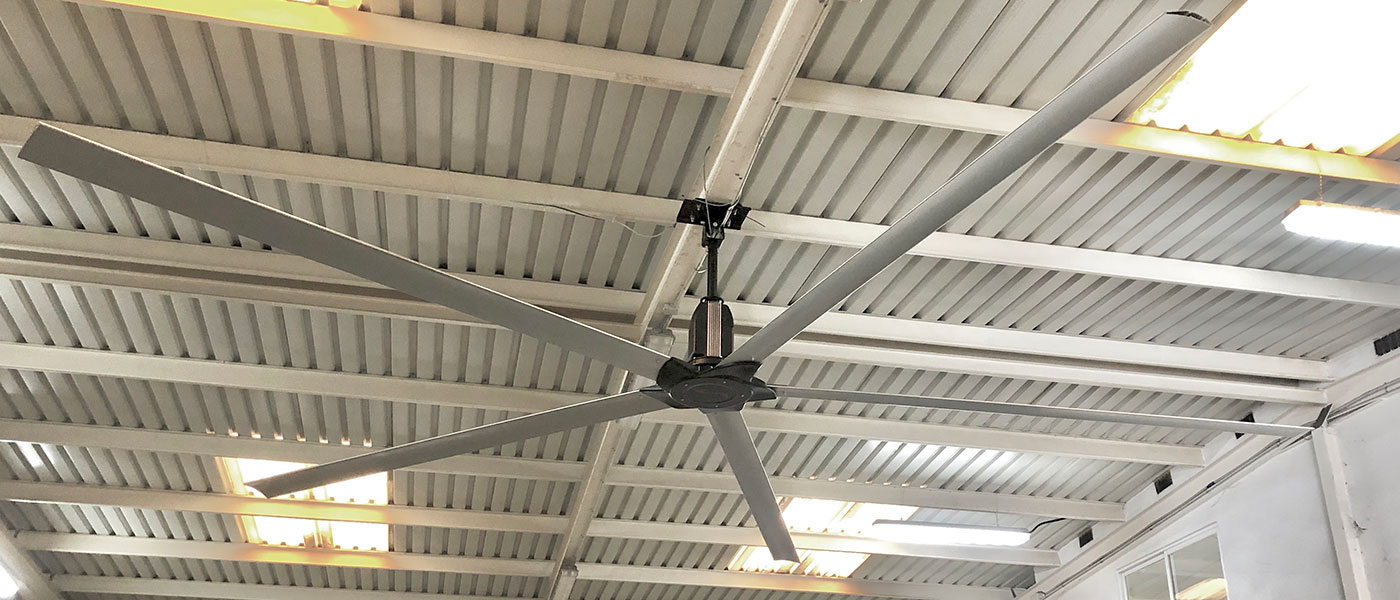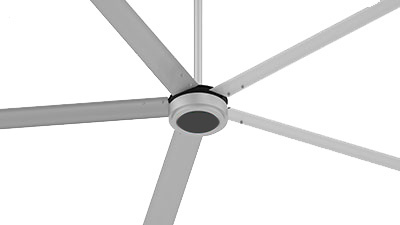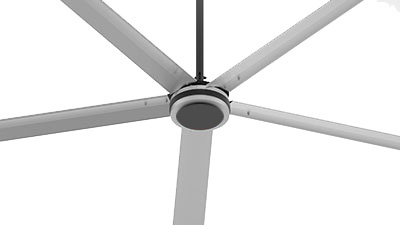The best big fans for industrial and commercial use

HVLS fans are the most energy-efficient industrial ventilation solution
Energy-saving high-volume low-speed fans are large ceiling fans ranging from 3 (10ft) to 7.3 meters (24ft) in diameter. They are the solution of choice in green buildings due to their dual cooling and heating capabilities, which offer superior ROI surprisingly fast.
HVLS fans are used for heat recovery in Winter, cutting heating costs by up to 45%
HVLS fans are used to cool people and animals in the Summer, reducing the perceived temperature by up to 7°C (12°F), which can reduce air conditioning consumption by up to 30% and in some cases, completely eliminates the need for AC.







